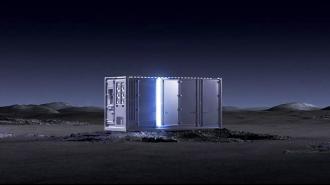The world’s biggest battery manufacturer just unveiled a new utility-scale energy storage system, which it says didn’t degrade at all over five years and could aid the transition to a grid powered solely by clean energy.
The challenge: Solar and wind power may be clean and cheap, but coal and natural gas have them beat when it comes to consistency — we can always burn more fossil fuels, but we can’t force the sun to shine or the wind to blow whenever the grid needs more electricity, like exceptionally hot days or cold nights.
Some solar and wind farms now store excess electricity in rechargeable lithium ion batteries, like Tesla’s Megapack, so that it can be used later. These are basically gigantic versions of the battery in your smartphone, and like your phone battery, they also suffer from issues with degradation — after so much use, they start to lose their ability to hold a charge.
What’s new? Chinese battery maker CATL has now unveiled TENER, a new energy storage system for power plants that it says won’t degrade at all during its first five years of use — this is something no other mass-producible energy storage system can claim, according to CATL.
TENER is as big as a standard 20-foot shipping container and has a capacity of 6.25 MWh. For comparison, Tesla’s Megapack is slightly larger and has a capacity of 3.9 MWh, which it says is enough to power 3,600 homes for one hour.
As for degradation, it’s not clear exactly how much is expected from a Megapack in the first five years of use, but presumably it must experience some, if CATL is right that TENER is the only energy storage system that doesn’t.

Looking ahead: TENER may beat the Megapack in capacity, degradation, and energy density, but there’s no word on how it compares on price — a single Megapack unit costs about $1.2 million, but CATL hasn’t released pricing details for TENER yet.
Regardless of what CATL decides to charge, though, Tesla might not have to compete with it.
CATL already supplies Tesla with EV batteries, is helping it set up a US battery factory, and has expressed interest in having Tesla license its battery tech for the US market, so a partnership where Tesla licenses TENER tech for Megapacks isn’t outside the realm of reason.
We’d love to hear from you! If you have a comment about this article or if you have a tip for a future Freethink story, please email us at [email protected].






